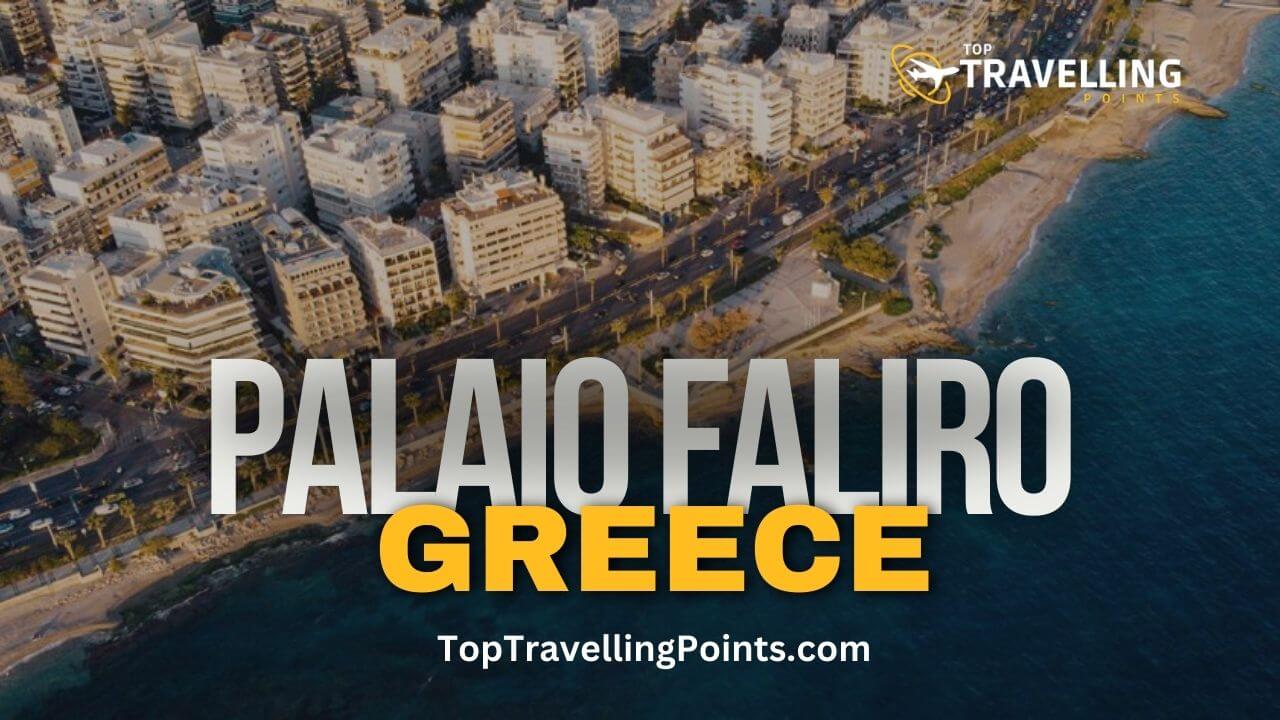Palaio Faliro, Greece: A Coastal Suburb with a Rich History
Nestled approximately 8 kilometers southwest of Athens, Palaio Faliro is a captivating coastal suburb that beckons travelers with its ancient allure and contemporary vibrancy. This enchanting locale has much to offer and boasts stunning beaches, a bustling nightlife, and proximity to the hallowed archaeological sites of Ancient Greece.
This article delves into the history, population, landmarks, and intriguing facts that define Palaio Faliro.
Key Takeaway
Explore Palaio Faliro, Greece, a coastal gem blending ancient history with modern allure. Uncover its rich past, vibrant population, iconic landmarks, and intriguing facts.
Question: What is the history of Palaio Faliro, Greece, and what are its notable landmarks and attractions?
Answer: Palaio Faliro, situated southwest of Athens, boasts a storied past dating back to antiquity, marked by Roman influence and a 19th-century revival. Noteworthy landmarks include the Faliro Coastal Park, Stavros Niarchos Foundation Cultural Center, Faliro Marina, and the Peace and Friendship Stadium.
Recommended: Karditsa, Greece
Palaio Faliro History
Palaio Faliro’s history unfolds like a tapestry woven through the annals of time.
Ancient Origins The roots of Palaio Faliro stretch back to antiquity. This region was a prominent port city in the bygone era, graced with vital temples and shrines. One of its most significant historical moments occurred in the 5th century B.C. when the Battle of Phaleron transpired, a clash where the Athenian fleet triumphed over the Spartans.
Roman Influence Throughout the Roman period, Palaio Faliro maintained its importance as a thriving port city. The Romans introduced a network of roads and architectural marvels. A new harbor was also constructed, breathing life into the city. In the 4th century A.D., the Byzantine Emperor Constantine the Great was baptized here, leaving an indelible mark on the town’s historical tapestry.
Medieval Challenges, However, the Middle Ages brought hardship to Palaio Faliro. The area grappled with the threat of pirates and raiders, and the port began to silt up.
Revival in the 19th Century Palaio Faliro’s renaissance unfolded in the 19th century, transforming into a luxurious summer retreat for affluent Athenians. The construction of opulent villas and hotels during this era left a lasting legacy.
20th Century and Beyond The 20th century witnessed Palaio Faliro’s continued growth and development. It was integrated into Athens in 1934, solidifying its status as a beloved destination for Athenians and visitors alike.
Recommended: Nea Smyrni, Greece
Palaio Faliro Population
Presently, Palaio Faliro is home to approximately 65,000 residents. The area boasts a diverse population, including Greeks, expatriates, and tourists drawn to its coastal charm and vibrant ambiance.
Recommended: Ptolemaida, Greece
Palaio Faliro Landmarks
Palaio Faliro is graced with remarkable landmarks that capture its essence:
1. Faliro Coastal Park: This popular green space invites visitors to revel in the beauty of the Aegean Sea. It offers breathtaking coastal views and is ideal for strolls, jogging, and cycling.
2. Stavros Niarchos Foundation Cultural Center: A testament to modernity, this center houses the Greek National Opera, the National Library of Greece, and the SNFCC Park, making it a hub for art and culture.
3. Faliro Marina A luxury marina, the Faliro Marina, hosts numerous yachts and features various restaurants, cafes, and bars, creating a hub for socializing and recreation.
4. Peace and Friendship Stadium This versatile stadium is the home ground for the Panathinaikos F.C. football club, a hub of sporting fervor.
Palaio Faliro Facts
Palaio Faliro is a treasure trove of interesting facts:
- Aquaworld Aquarium: Palaio Faliro is home to Greece’s largest aquarium, the Aquaworld Aquarium, which showcases a captivating world beneath the waves.
- Urban Forest: The Faliro Coastal Park is home to the largest urban forest in Greece, providing a lush sanctuary within the bustling city.
- Sustainable Marvel: The Stavros Niarchos Foundation Cultural Center is one of the most sustainable buildings globally, reflecting a commitment to eco-conscious architecture.
- Birthplace of Theophrastus: Palaio Faliro is the birthplace of Theophrastus, a renowned ancient Greek philosopher.
Conclusion
Palaio Faliro, Greece, is a mesmerizing coastal suburb that artfully marries its rich history with contemporary vibrancy. Its storied past, diverse population, striking landmarks, and intriguing facts make it an irresistible destination for Athenians and tourists. With its beautiful beaches, lively nightlife, and proximity to ancient relics, Palaio Faliro is where the past and the present converge in a harmonious tapestry of culture and natural beauty.
Palaio Faliro FAQs
Q: When is the best time to visit Palaio Faliro?
A: The optimal times to explore Palaio Faliro are during spring and fall when the weather is temperate. Summers can be hot, while winters tend to be chilly and rainy.
Q: What activities can one enjoy in Palaio Faliro?
A: Palaio Faliro offers a diverse array of activities, including visits to the Faliro Coastal Park and the Stavros Niarchos Foundation Cultural Center, beach relaxation, nightlife exploration at local bars and clubs, exploring the archaeological site of Ancient Phaleron, and taking boat trips to nearby islands like Aegina and Hydra.
Q: How can one reach Palaio Faliro?
A: Palaio Faliro enjoys excellent connectivity to Athens via public transportation. Travelers can opt for the metro, bus, or tram to access this captivating coastal paradise.
DID WE MAKE A MISTAKE?
Submit a correction suggestion and help us fix it!
- Exploring Ohio: Unveiling the Gems of the Buckeye State - May 11, 2024
- Exploring the Ancient Marvel: Corinth, Greece - May 8, 2024
- Discover Acharnes: Where Ancient History Meets Modern Vitality - May 8, 2024




![Top 20+ Best Beaches in Greece 2024 With Images – [2024 Updated List]](https://toptravellingpoints.com/wp-content/uploads/2023/11/best-beaches-in-greece-768x432.jpg)


